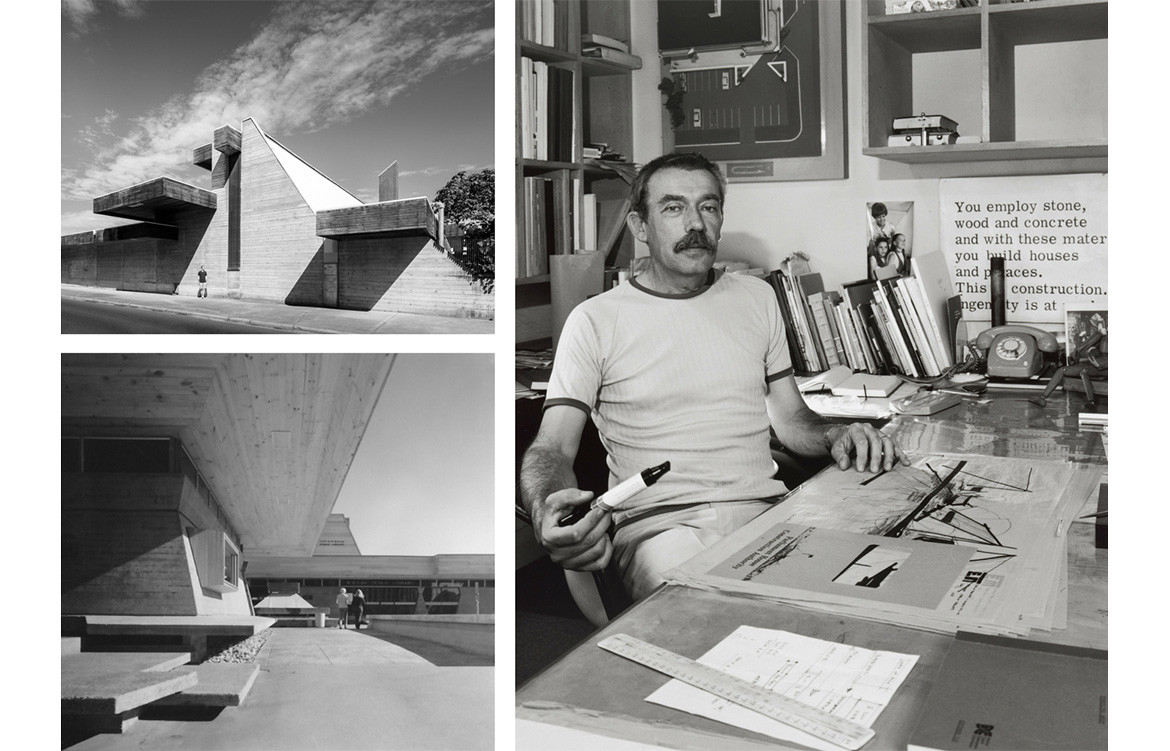Enrico Taglietti’s contribution to Australian architecture is difficult to overstate. His thoughtful detailing, aesthetics and sense of place have helped to shape Australia’s national capital, which is why in 2018, DESIGN Canberra is hosting the Enrico Taglietti Symposium.
Speaking at the symposium is author, editor and all around architecture expert Karen McCartney. HabitusLiving spoke with karen ahead of the symposium to discuss what makes Enrico Taglietti such a fascinating subject.
HabitusLiving: What is special about Enrico Taglietti’s role in Australia, and Canberra’s, architectural history?
Karen McCartney: Taglietti felt that to be a modern architect it was necessary, ‘to sever oneself totally from the past in order to ask questions as though nothing existed before’. It was a radical move given his life in Milan, which was not only steeped in history, but was also at the forefront of technological advances and architectural experimentation. He embraced the very unformed, even embryonic nature of Canberra in the 1950s and he has been a tremendous influence in shaping the aesthetic of public and private buildings alike for the past 60 years.
Why do you think Taglietti’s designs have stood the test of time?
Taglietti has always followed his own architectural path and his unique vision has created work that is timeless and enduring. There is a certain exuberance of form in his work, which is always married with an intelligent use of space to facilitate the functional.
Why is now the right time to re-evaluate his work in the symposium?
Taglietti was awarded the RAIA Gold medal in 2007 and so if anything it is well overdue. It is, however, an inspired initiative of DESIGN Canberra Festival to shine a spotlight on his work and create a forum for discussion and renewed appreciation. In the broader community some buildings, such as Flynn Primary School, have been threatened with demolition and this creates discussion about the contribution he has made to the city. I also hear a new generation of architects referencing the impact of his work on their own – there is a wonderful, enduring legacy.
How has Taglietti influenced your own practice or appreciation of architecture?
Taglietti’s most inspiring attribute – rather like David Attenborough – is an ability to maintain a constant curiosity late into life. His daughter, Tanja, admits to years of coming home from school never quite sure of what she might find – a new void here, an experiment or an alteration there. A new workroom in his own home, off the main living space, was only built a couple of years ago. It is a functional addition lined in hoop pine ply, the geometric window openings framing views of nature, with raw and artisanal desking imparting the experimental vibe of a young architect rather than someone in his ninth decade. This, married with strong opinions, a formidable intellect and acute sense of humour make him a role model for a lifetime of passionate engagement with architecture.
Do you have a favourite Taglietti design or trademark idea?
One of his greatest preoccupations is the impact of light and shadow on a space. He is an advocate of architect Louis Khan’s sentiment, ‘The sun never knew how great it was until it hit the side of a building’. Taglietti’s phenomenal contribution to the architecture of Australia is predominantly about the manipulation of form – his buildings such as the Dickson Library (1968) and the Australian War Memorial Annex (1974) – are assured, sculptural and emotive – the result of his love of how concrete can be expressively shaped.
What else are you personally looking forward to in DESIGN Canberra Festival 2018?
I am taking part in the bus tour Enrico Taglietti and the ‘Invisible City’ and I am also doing a talk about my new book ‘The Alchemy of Things: Interiors Shaped by Curious Minds’ which features Taglietti’s home – the first time it has been featured in a publication.
The Enrico Taglietti Symposium takes place Friday, November 16 at the James O Fairfax Theatre. The event is sure to be a sell out highlight on a calendar of highlights for DESIGN Canberra 2018, so if you’re interested, get those tickets now!in

